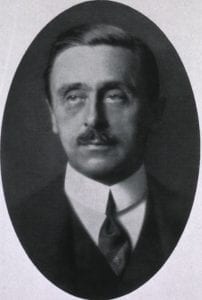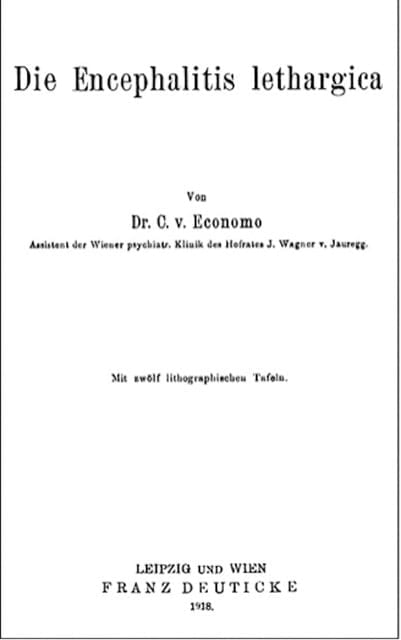JMS Pearce
Hull, England, United Kingdom
| Table 1. QUARANTINABLE DISEASES |
| Cholera |
| Diphtheria |
| Infectious tuberculosis |
| Plague |
| Smallpox |
| Yellow fever |
| Viral hemorrhagic fevers |
| Severe acute respiratory syndromes |
| Influenza pandemic |
| From the Centers for Disease Control and Prevention. Legal authorities for isolation and quarantine. Source |
The pandemic Covid-19 infection, first reported from China in December 2019, reminds us of many previous epidemics of infectious diseases (Table 1) amongst them the plague or Black Death, cholera, and the more recent “Spanish” influenza of 1918, SARS-CoV-1 in 2003, Middle East respiratory syndrome (MERS) in 2012, and Ebola in 2014.
Although clinicopathologically unrelated, one such devastating epidemic was encephalitis lethargica (EL), known as “sleeping sickness” that coincided with the influenza epidemic of 1918.1 The number affected during the epidemic is unknown, although estimated at more than one million cases.
The first epidemic of c.1917 was followed by a larger epidemic in 1920. Now largely forgotten in the mists of history, my generation of physicians of the later twentieth 20th century were familiar with it only by means of its main sequel: post-encephalitic Parkinsonism.
Berndt of Greifswald first reported the term “encephalitis lethargica” in the 1830s in “soporose” cases after scarlet fever in children. The name of von Economo (Fig 1) is inseparably attached to the disease since his were the major descriptions2,3 (Fig 2) of a cruel illness that raged in epidemic form in Europe and North America between 1916 and 1926. Ivy McKenzie described the illness seen in Glasgow in 1927,4 and Jelliffe, and Wimmer published useful monographs.5 In previous centuries several physicians had chronicled somnolent states associated with febrile infections.6 Epidemic Schlafkrankheit was recorded in 1580; the 1673–1675 febris comatosa epidemic outbreak was reported by Sydenham, and De febre lethargica in strabismo utriusque oculi desinente (lethargic fever ending with bilateral strabismus) by Johann Albrecht of Hildesheim in 1695.7 Von Economo knew of an epidemic of a stuporous state called Nona in Italy in the late 1800s. It is uncertain if these were the same conditions as von Economo’s encephalitis lethargica.8
In late 1916, Constantin von Economo (Fig 1) discovered patients in Vienna:
“Sleeping sickness” where the phenomenon of people falling asleep while eating or working was first described in two cases in our clinic in Vienna in 1916. Usually headache, nausea, and fever were followed, often the next day, by sleeping, frequently in a most uncomfortable position. One can wake them, but in severe cases, coma can rapidly lead to death. Malfunction of eye muscles, especially oculomotor dysfunction, and ptosis, was common.2, 9
 |
| Fig 1. Constantin von Economo. National Library of Medicine. Source |
Since the picture differed from previous cases of encephalomyelitis, in April 1917 von Economo presented his clinical and pathologic findings of this new disease to the Vienna Psychiatric Society and published his findings.2, 10
Excerpts from a translation of his description relate:
“We are dealing with a kind of sleeping sickness, having an unusually prolonged course. The first symptoms are usually acute, with headaches and malaise. Then a state of somnolence appears, often associated with active delirium from which the patient can be awakened easily. He is able to give appropriate answers, and to comprehend the situation. This delirious somnolence can lead to death, rapidly, or over the course of a few weeks. On the other hand it can persist unchanged for weeks or even months with periods lasting hours or days or even longer, of fluctuation of the depth of unconsciousness extending from simple sleepiness to deepest stupor or coma . . . During the first days of the illness, isolated signs of meningeal irritation appear . . .
“As a rule these general symptoms are joined by paralysis of the cranial nerves as well as in the extremities . . . a paralytic ptosis often combined with partial or total paralysis of other branches of the oculomotor nerve . . . Paresis of the other cranial nerves and paralysis of the extremities with reflex disturbances can occur also . . . As the residual of such a paresis (upper and lower extremities), spasms, increased reflexes, or the Babinski phenomenon can persist for a long time, . . . one often finds a peculiar rigidity of the extremities (cases 1, 2 and 4). Like most of the signs this rigidity disappears later . . .”2
He demonstrated inflammatory pathology with lesions in the tegmental gray matter and a cellular infiltration of blood vessels.8 At the same time, a French physician, Jean René Cruchet, described forty cases of “subacute encephalomyelitis,”11 ten days before von Economo. Not surprisingly, assertions of priority were soon disputed.12
The illness usually started with a sore throat followed by drowsiness, reversed sleep pattern, delirium with variable hallucinosis, disordered eye movements and variable neuropsychiatric symptoms, signs of Parkinsonism, catatonia, and dyskinesias. Von Economo distinguished three types: somnolent ophthalmoplegic, hyperkinetic, and amyostatic-akinetic. He observed that post-encephalitic Parkinsonism typically emerged years after the original infection.
 |
| Fig 2. Die Encephalitis lethargica, 1918 |
Because of the somnolence, Von Economo carried out detailed investigations of sleep/waking mechanisms.13, 14 Ludwig Mauthner (1840–94) had in 1890 localized pathological sleep and abnormal eye movements to the periaqueductal gray matter and oculomotor nuclei,13 which matched von Economo’s findings of involvement of the midbrain periaqueductal gray matter: a “center” for sleep control in the first variant, and the anterior caudate nucleus in the second.
Since the 1916-1927 epidemic, rare sporadic cases have been described.15 The common pathology was midbrain and basal ganglia encephalitis, with lymphocyte and plasma cell infiltration. Since EL occurred at about same time as the 1918 influenza pandemic, many speculated a causal link16 although von Economo thought that the influenza virus was not the cause. His conclusion was subsequently confirmed when Influenza RNA was not detected in archival brain tissues from encephalitis lethargica cases or in postencephalitic Parkinsonism cases.17
By contrast, in recent sporadic cases the findings of intrathecal oligoclonal bands in 70% and raised anti-streptolysin-O titers in 65%, and autoantibodies reactive against human basal ganglia on western immunoblotting antigens in 95% of patients, have suggested that encephalitis lethargica may have been secondary to an autoimmune reaction to deep gray matter neurons—comparable to Sydenham’s chorea.15
Baron Constantin von Economo (1876–1931)
Von Economo was an accomplished neurologist, histologist, and physiologist,18 but also a musician, poet, linguist, and aviator.
He was born of aristocratic Greek parents in Romania and educated in Trieste. He decided to study medicine, but first at his father’s insistence read machine engineering in Vienna. In 1895 he studied medicine in Vienna. During this period he also worked in Exner’s Physiological Institute. After graduation in 1901 he spent time with Nothnagel, and in Paris with Pierre Marie. In Berlin he worked with Ziehen and Hermann Oppenheim and later visited Kraepelin in Munich. In 1906, he became assistant to Julius Wagner-Jauregg, the Nobel Prize-winning psychiatrist in Vienna, but when Wagner-Jauregg retired in 1928 von Economo, being of independent means, refused his chair of psychiatry.
He published 139 scientific papers including forty-nine on encephalitis lethargica and related conditions. Ahead of his time, his later papers showed the role of the brainstem and the hypothalamus in controlling sleep and wakefulness,1, 3 well described by Triarhou.8 With Koskinas in 1925 he published a two-volume atlas of cytoarchitectonics of the cerebral cortex. He was unsuccessfully thrice nominated for the Nobel Prize in Physiology or Medicine.
He married the daughter of Prince Alois von Schönburg-Hartenstein. A man of great accomplishments he died suddenly of heart disease in 1931.
References
- Reid AH, Mccall S, Henry JM, Taubenberger JK. Experimenting on the Past: The Enigma of von Economo’s Encephalitis Lethargica. Journal of Neuropathology and Experimental Neurology 2001;60:663-70.
- Von Economo C. Encephalitis lethargica. Wien Klin Wschr 1917; 30: 581-5. (For full text of translation see Wilkins RH, Brody IA. Encephalitis Lethargica. Arch Neurol 1968; 18:324-8)
- Von Economo C. Die Encephalitis Lethargica (Mit zwölf lithographischen Tafeln), Franz Deutike, Leipzig und Wien, 1918, 79 pp.
- McKenzie I. Discussion of Epidemic Encephalitis. Epidemiological considerations. Brit Med J 1927; 1:532-4.
- Wimmer SA. Chronic Epidemic Encephalitis. London: Heinemann, 1924.
- Crookshank FG. A note on the history of epidemic encephalitis. Proc R Soc Med 1918;12:1–21.
- Sacks O. Awakenings. London: Picador 1991;320. https://epdf.pub/awakeningsc9e7cb1bfd44d5f1cdaea78667c7415616361.html
- Triarhou LC. The percipient observations of Constantin von Economo on encephalitis lethargica and sleep disruption and their lasting impact on contemporary sleep research. Brain Research Bulletin 2006;69:244-258.
- Hoffman LA, Vilensky JA. Encephalitis lethargica: 100 years after the epidemic Brain 2017: 140; 2246–2251.
- von Economo C. Encephalitis lethargica: Its sequelae and treatment. London: Oxford University Press, 1931
- Cruchet R, Moutier J, Calmettes, A. Quarante cas d’encéphalomyélite subaiguë. Bull Soc Med Hôp Paris 1917; 41: 614–6.
- Von Economo C. Cruchet’s “encéphalomyélite subaiguë diffuse” and epidemic encephalitis lethargica. Lancet 1929; 217:121-122.
- von Economo C. Sleep as a problem of localization. The Journal of Nervous and Mental Disease march 1930, vol 71(3):1-5.
- Constantinescu CS, Gröger H. Constantin Von Economo’s Theory Of Primary Control Of Sleep By The Central Nervous System Proc R Coll Physicians Edinb 2000; 30:352-354
- Dale RC1, Church AJ, Surtees RA, Lees AJ, Adcock JE, Harding B, Neville BG, Giovannoni G Encephalitis lethargica syndrome: 20 new cases and evidence of basal ganglia autoimmunity Brain. 2004 Jan;127(1):21-33. Epub 2003 Oct 21.
- Foley PB. Encephalitis lethargica and the influenza virus. II. The influenza pandemic of 1918/19 and encephalitis lethargica: epidemiology and symptoms. J Neural Transm (Vienna). 2009;116(10):1295–1308.
- McCall S1, Henry JM, Reid AH, Taubenberger JK. Influenza RNA not detected in archival brain tissues from acute encephalitis lethargica cases or in postencephalitic Parkinson cases. J Neuropathol Exp Neurol. 2001;60(7):696-704.
- Pearce JMS. Baron Constantin von Economo and Encephalitis Lethargica J Neurol Neurosurg Psychiatry1996;60:167
JMS PEARCE, MD, FRCP, is emeritus consultant neurologist in the Department of Neurology at the Hull Royal Infirmary, England.

Leave a Reply